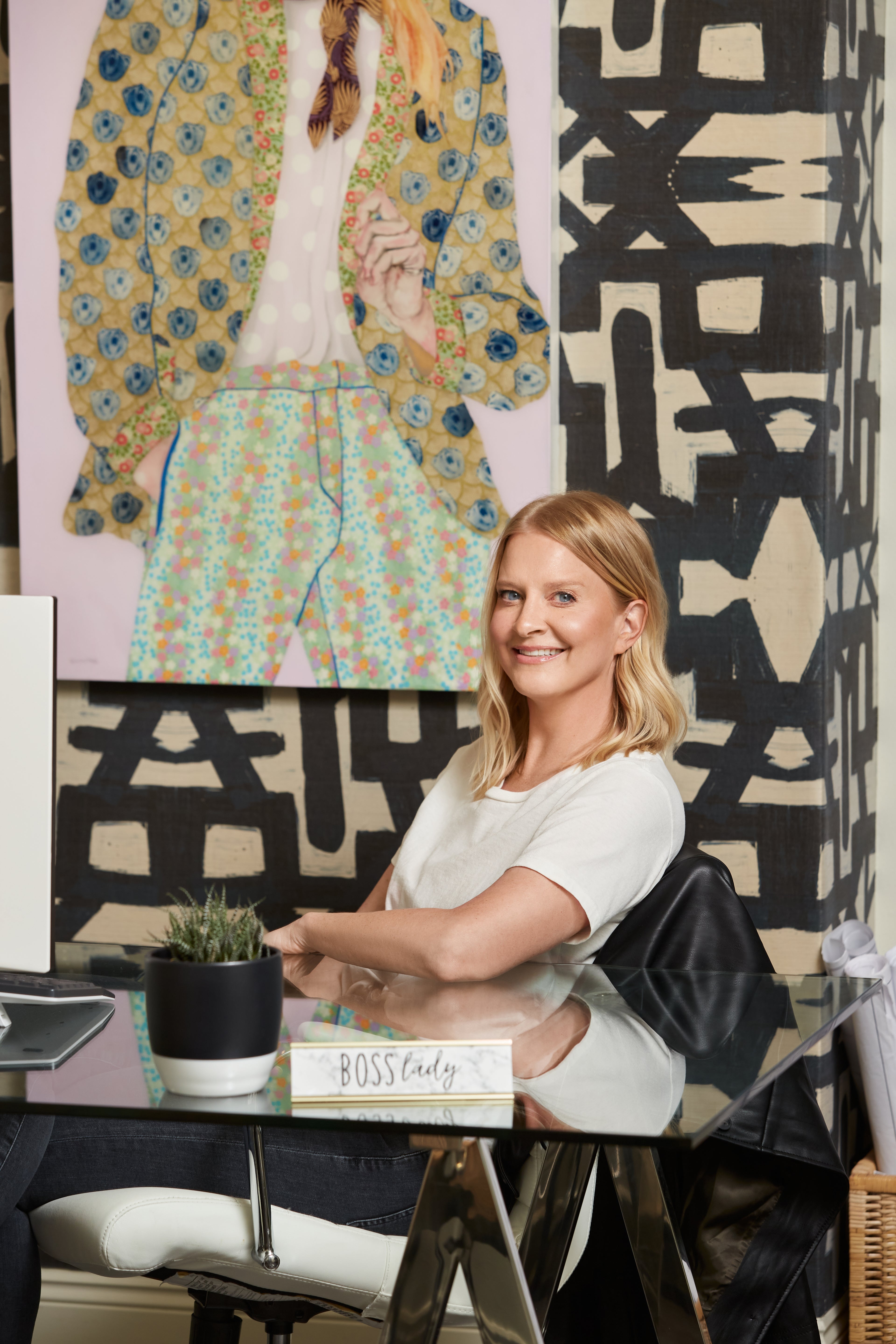The 50 States Project is a series of candid conversations with interior designers across the country about how they’ve built their businesses. This week, Little Rock, Arkansas–designer Jill White tells us why she’s grateful for the unglamorous jobs at the start of her career, how a vendor relationship turbocharged her business and why a staff member’s recent departure has made it harder to let go of the small stuff.
Did you always want to be a designer, or what was your path into this field?
I grew up in a tiny town in Arkansas. My mom’s side is a farm family, and my dad’s side is in the construction business. My grandmother on my mom’s side has always had the most amazing style—even as a little kid, I remember noticing her antiques and touching her wallpaper, because we didn’t have wallpaper at my house. She got me interested in art: She bought me my first piece of art when I was in 10th grade—I can remember her taking me to this art dealer in town, and she was like, “OK, go pick what you like.” I would pick one, and she’d make me explain why I liked it. She kind of started my thinking. And then on my other side of the family, my grandfather had a lumber company, and my sister and I grew up working in that.
I guess I kind of knew I wanted to do this, but I also left a small town to go to college [elsewhere in Arkansas] and went to, like, four classes in two years. The parties were fun, but I wasn’t focused at all. I had never really researched schools, you know? I just went, and then I hated it. I ended up getting married when I was 21, and I left school. My husband, whom I had started dating in eighth grade, had already graduated, and we moved all over for his job in pharmaceutical sales—nine times in like nine years—and in every town, I would go to different colleges and take art classes, just trying to kill time while I worked at coffee shops. Then we landed in Northwest Arkansas, where we stayed for 10 years. That’s when I went on a tour of the design department at University of Arkansas and ended up going back to school. By that time, I was like the old lady in class.
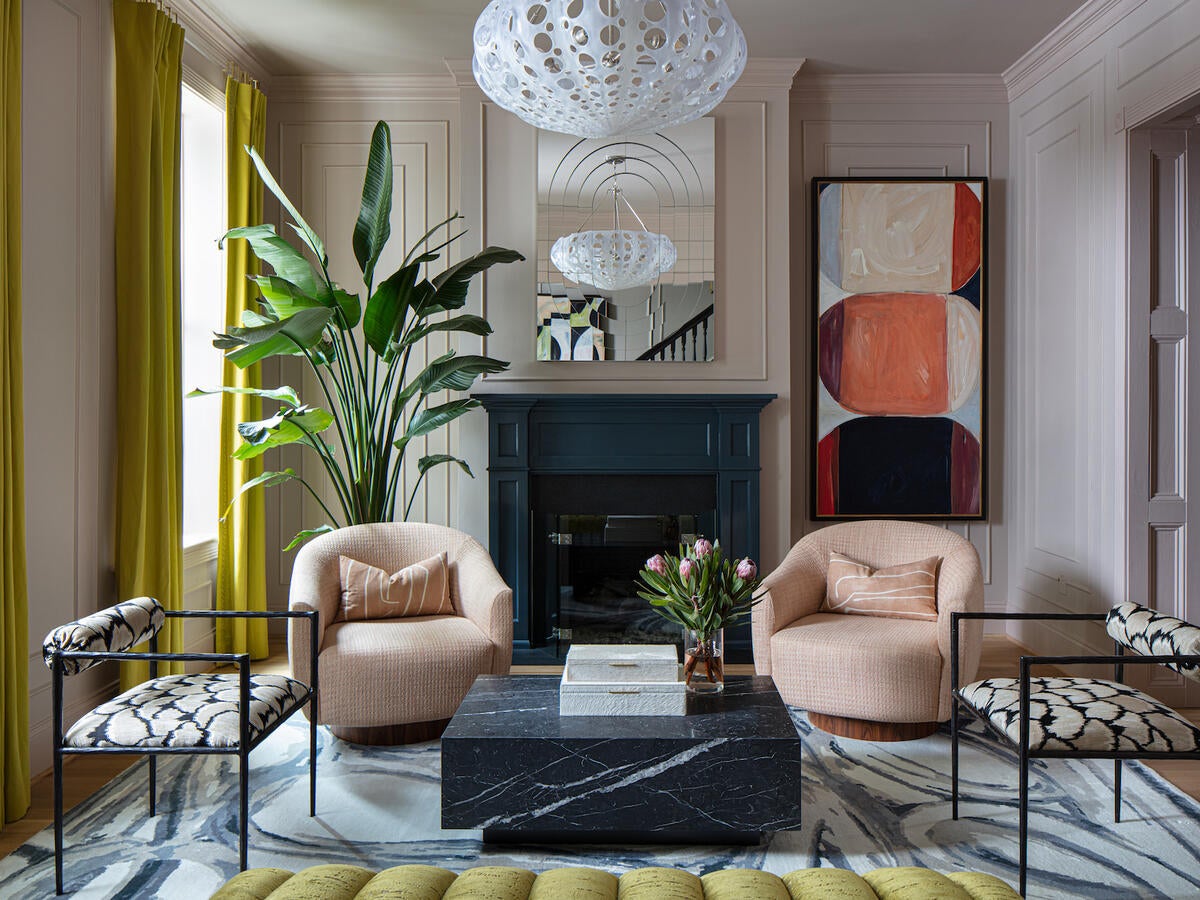
Did that time and exploration solidify for you that design was what you wanted to do?
A million percent. It took me all that time doing these odds-and-ends jobs to realize that, at the end of the day, I really did want to be a designer. So I was like, I’m just gonna go do it, and I went through the program. It was hard, but it was great. After I graduated, I got my first job with an architecture firm in Rogers, Arkansas, and basically sat in a cubicle and did AutoCAD all day. It wasn’t a dream design job, but I tell our interns now, “You may not get your dream job right away.” I mean, yeah, everybody wants to graduate college and be in Architectural Digest and work for Kelly Wearstler or something. Everybody wants to do that. But you may have to have a crappy job where you sit in a cubicle—but I think that job was everything for me because I learned the core skills, like drawing, that you don’t really know until you’re in it.
I had to take a CAD test for that job, and when I went for my interview, I was so scared that I literally didn’t complete any of the tasks. A tear literally went down my face during the test because I was like, “I’m never gonna get this job.” Then I went into the conference room, and there were like six men interviewing me. We started talking, and by the end, they were like, “We’re going to offer you this job—but not because of your CAD skills, because of your personality.” They gave me a chance, and they taught me everything. I stayed there until [my husband and I] moved again, and that led me to my next job with another firm, where I got more into interiors—not just pumping out CAD all day. Then I had my daughter and realized I was done sitting at a desk five days a week. At first, I was kind of trying to work from home with her, but it was a nightmare. Finally, I was like, “OK, you know what? I think I’m going to try to go out on my own.” I thought owning my own business would be easier. Obviously, now I know it’s not—now I work 90 hours a week instead of 40—but I love it, and there’s no going back from here.

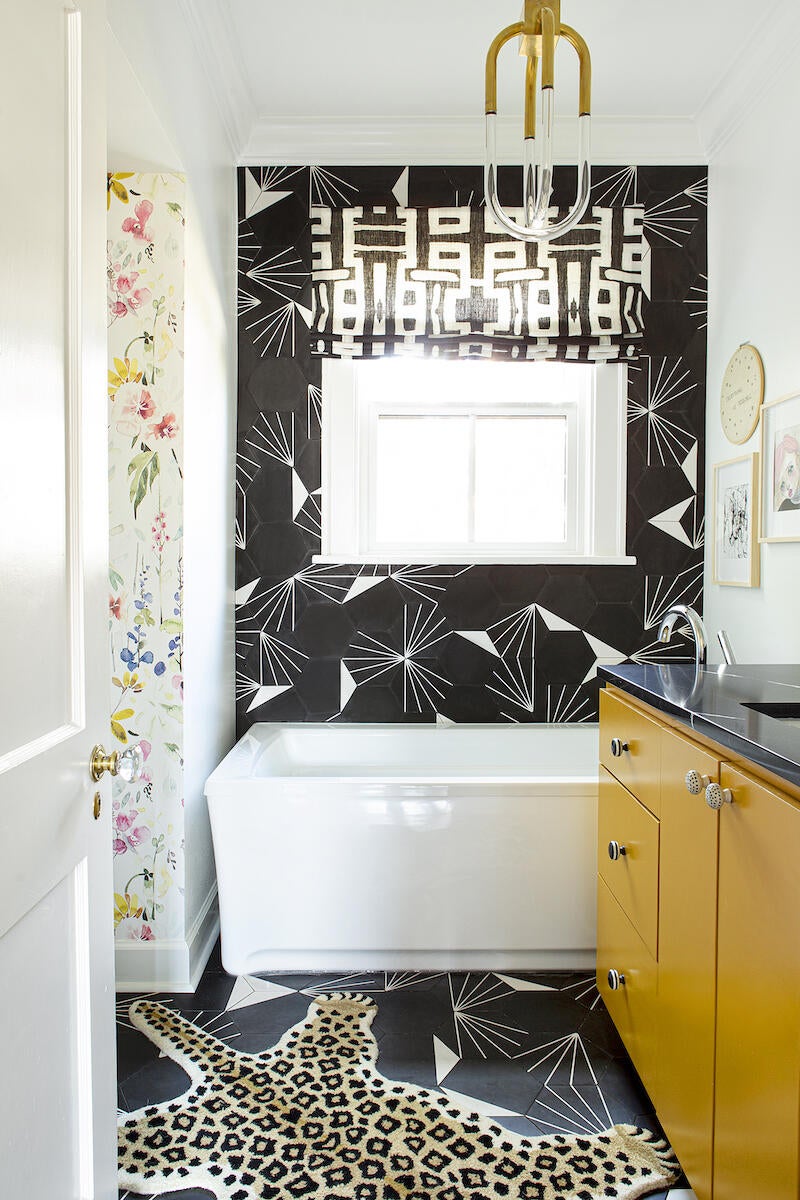
Where did those early projects come from?
I started just kind of helping friends. If I go back to the very beginning of my Instagram, the projects are the ones I was finishing [as a contractor] with [the firm I had worked for], and then it’s my mom’s house, my aunt’s house, my friend’s house. That was in 2013—but I officially say I started in 2015. That’s when I started my Instagram and bought business cards. It’s when I finally felt like I had a business.
What changed that made you feel that way?
We had moved to Little Rock, and I was working out of my house. I was still doing contract work for my old bosses—a couple of condos, and then they bought an old hotel. The business kept growing through word of mouth. And then this woman I buy wallpaper and fabric from out of Richmond, Virginia, sent me this random email. She’s like, “Hi, my name is Lindsay Cowles. I am working on my house, and I really want you to help me.” And I was like, “Wait, do you know that I’m a designer in Little Rock, Arkansas? Did you email the right person?” And she’s like, “Yes, I've been following you, and I like your style. You’re hilarious on your Instagram.” And we just started talking. I helped her with her house, and then it was published online by Architectural Digest. She has a big following on social media, and from that, I think people really looked at me and were like, “Oh, wow, this girl’s legit.” It gave me a huge push.
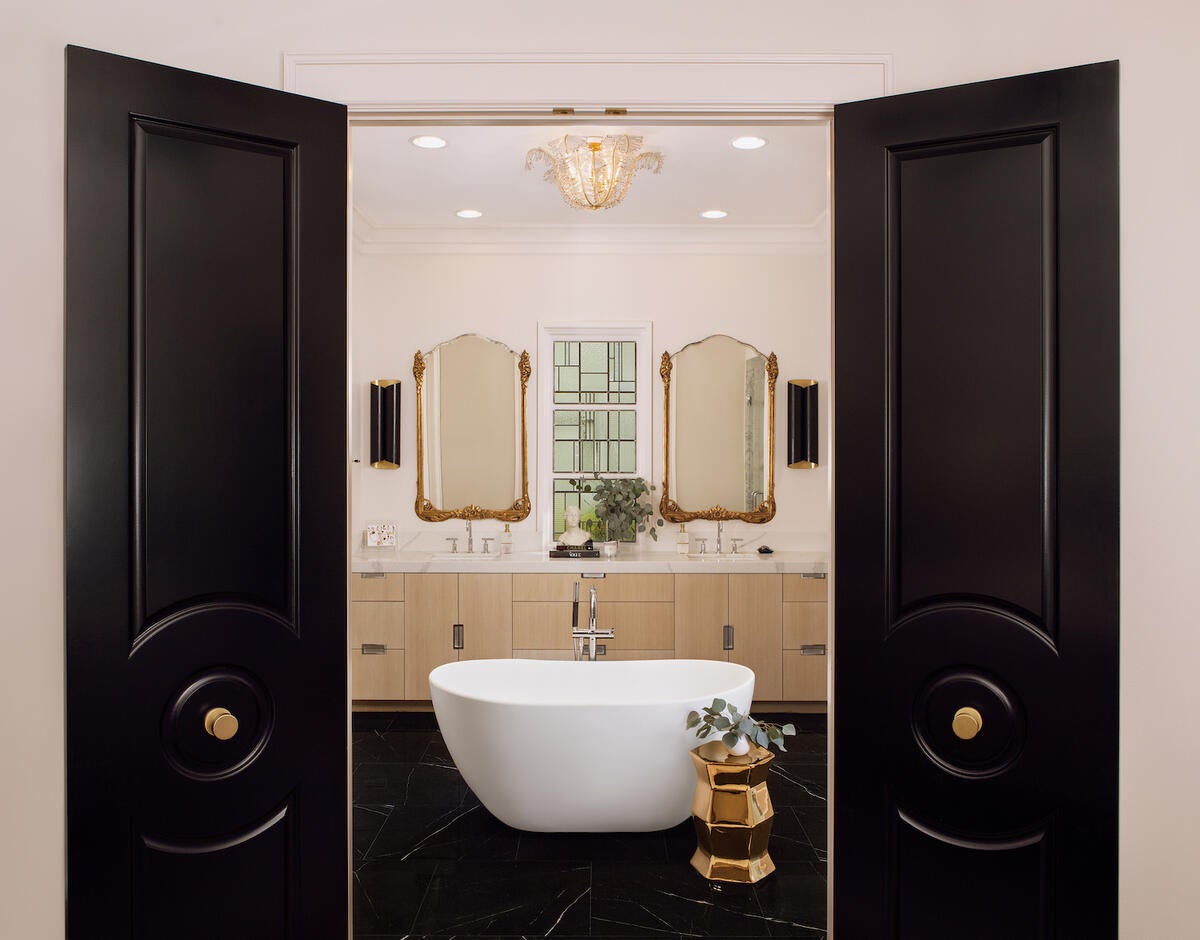
What does your business look like today?
There are three of us plus a high school intern. I have a new office manager, who is also taking classes to be a designer, and then Logan, who went through the same program that I did at U of A and has been a designer here for two years. They’re both young, and they keep me cool.
And when did you realize that you needed to make your first hire?
When I started my business, I was only doing design work. I would do a space plan, design the millwork, send product links and be like, “Here, just go.” Then I went to High Point Market with a few designer friends and realized there was another whole part of this. In the past three to four years, I have started selling more products—now I’m like, “I have to have a hand in everything, or it’s not a cohesive finished project.”
But that changes the workload.
I got an office in 2016. Before that, my three-year-old daughter was banging on the glass in my office while I was working in my house, and I was like, “I’ve got to get out of here. I can’t work with you staring at me all day, kid.” So I moved in with this architect friend of mine and got an intern, which worked for a few years. They were helpful and talented, and for a while, it was kind of manageable for me to do the work with a bit of help. But by the time I hired Logan two years ago, I was drowning.
How many projects are you working on these days at a given time?
We have about 30 clients right now. Sometimes I’ve had 50, sometimes I’ve had 10, and they’re all over the board. We have two commercial projects right now—that’s pretty normal. I don’t do a lot of commercial work, but we usually keep one or two a year, and then everything else is residential.
We do a lot of remodels, and there are several on this list of projects that are just a kitchen or a bathroom, and that’s difficult sometimes, but most of what we do is full scope. We have several clients who have purchased a spec house, and, now that they’re in there, it’s just a white box with gray-and-white tile. And they’re like, “How do we make this look cool?”

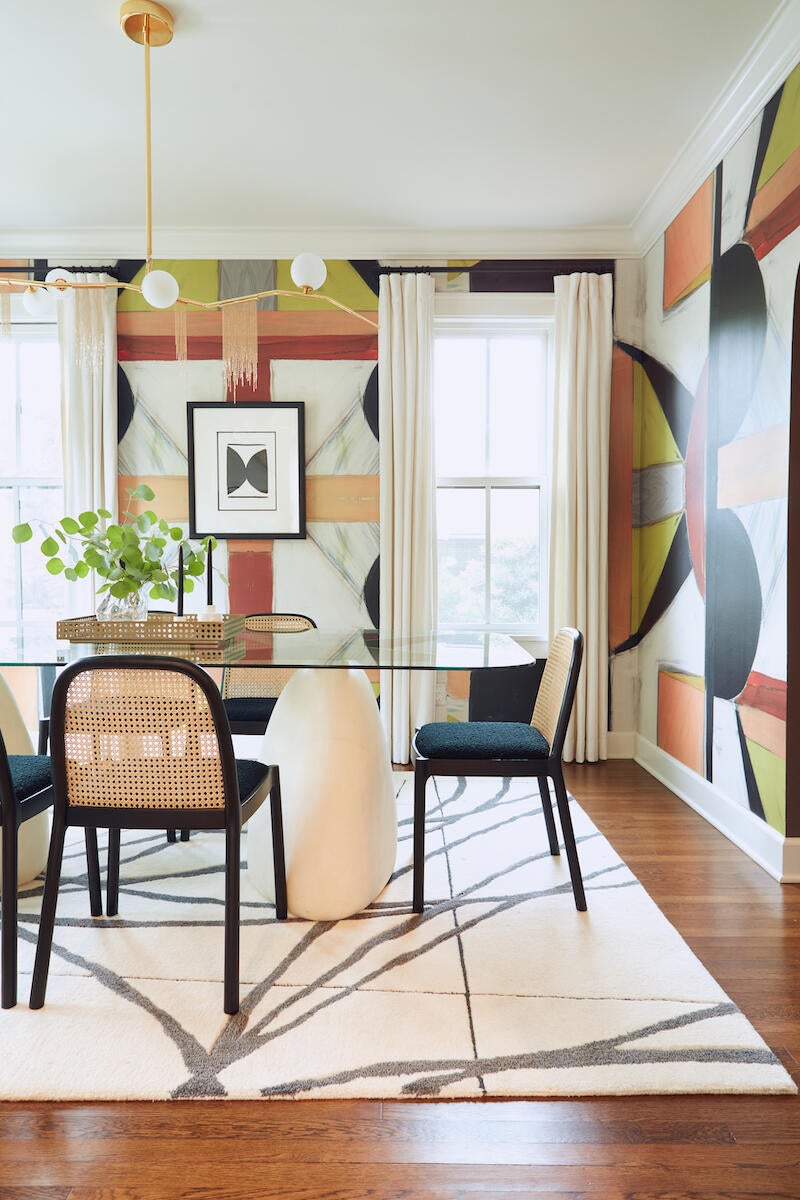
How hands-on are you with each project?
I’m very controlling. I am! I know everything about everything, and I wish I wasn’t this way, but I can’t help it. Look, I’ll joke a lot and I cuss—I’m very laid-back, but this is very serious to me. This is my life. At the end of the day, my name is on the line, you know? [Asks her staff, then repeats their answers.] What do you guys think, am I crazy? Mikayla says it’s the perfect mix. Logan says he likes me because I’m crazy. As much as I want to do everything myself, I have realized that I can’t do it by myself and I do need people.
Everything we do is collaborative—Logan is with me on the first consultation, and we’re all three on every single board for every single client. We go back and forth. I need them, and they know that. They help a lot. And I try to make that very—I think I say it a lot, but I want everybody to do everything here. Like, we all get to do fun things, but we all also have to break down boxes and take out the trash.
What about client communication?
Unfortunately, that still all goes through me. The phone number on the website is my cell phone, which is terrible, and I’m trying to change that. That’s the control thing. But it’s in my contract that I like to keep communication through email.
How important is your contract in terms of framing the kind of relationship you have with a client?
Our contract isn’t complicated. It’s two pages: This is what we do. This is what it costs. And these are the rules. It’s so important—even if it doesn’t work a lot of the time, it does protect us from a lot. We were literally talking about this yesterday: We have two upcoming consults but haven’t gotten the signed contract back, and I’m like, “We’re not going. You have to sign the contract and pay the retainer, or we’re not going.” But that comes with time—I used to be like, “It’s fine.” I didn’t even have a contract for the first three years because I was like, “No one would ever do anything.” I was so trusting. And then, you know, things started happening. Now, we revise our contract constantly because people are terrible. I mean, I’ve been very blessed and most of our clients are great, and they respect what we do. But we do still get those that don’t, and they will take advantage of you. I still haven’t figured out how to weed those people out.
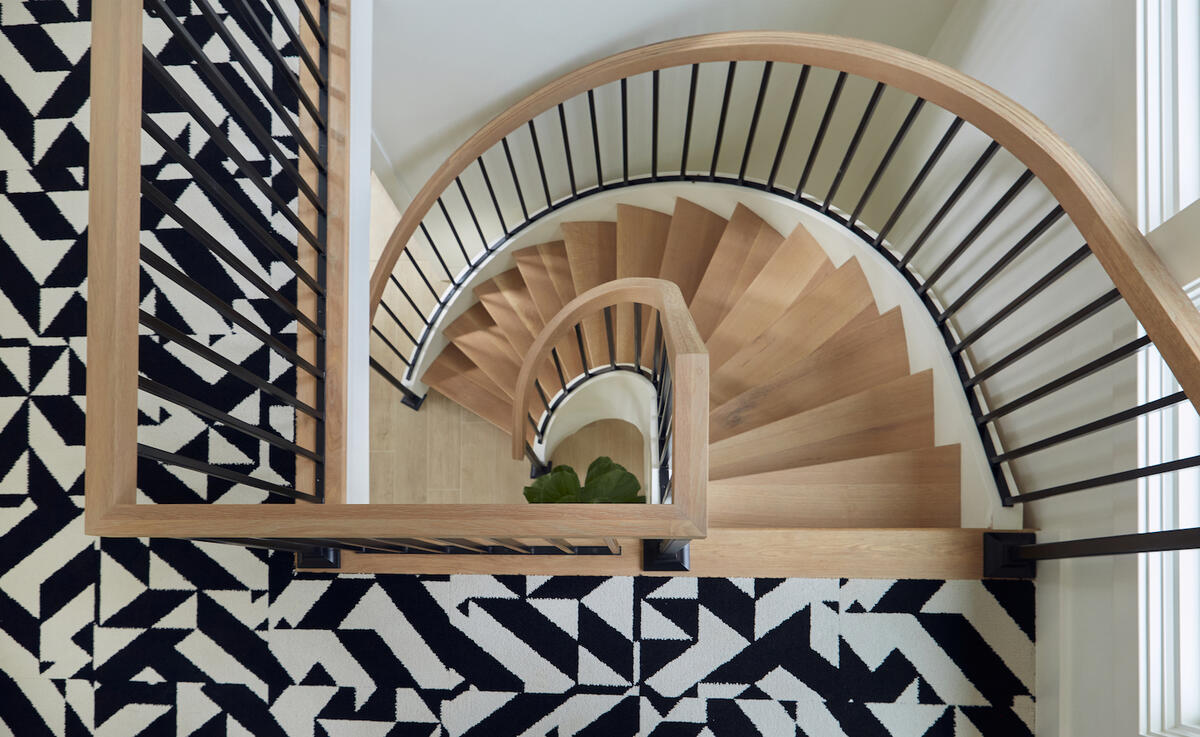
Can you tell me about the design scene in Little Rock?
Little Rock is great—it’s a nice town—but [compared to] Northwest Arkansas, which is where I went to college, they just beat us in everything. Tons of money. They have Walmart and Tyson Foods [headquartered there], so all my designer friends there are constantly working on these ridiculous projects, and it’s hard not to compare. It’s hard not to be like, “Why can’t we get that?” Little Rock has some big, beautiful homes—either out west, which are the newer [homes], and then the central area, which is where I live and has more of the older houses with character. For example, I live in a 1,200-square-foot cottage house. But so many people are buying those and tearing them down to build McMansions.
That kills me a little bit.
Well, it does until they’re your client, and then you’re like, “OK, great. This is awesome.” There’s a lot of that. But for me, personally, I wanted to preserve my little house.
Have your clients typically worked with a designer before?
Some yes, some no. We have a little process guide to help people who are like, “We don’t know what we’re doing.” I’m always like, “No, that’s why you hire us. You don’t have to do anything but pay your bills. Just sit back and let us do your house for you.” And sometimes that works, and sometimes people want to be very involved. It just depends on the project and the client.
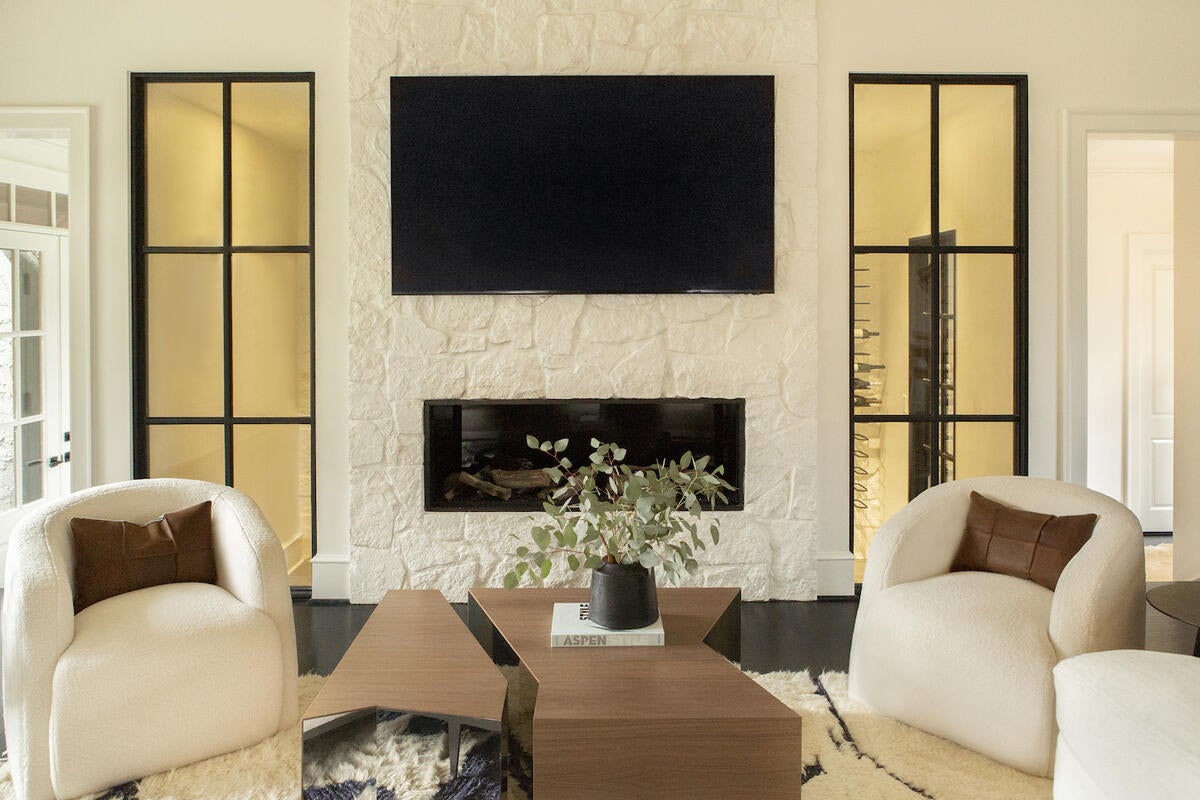
How have you approached billing for your work?
Oh, so horribly, thank you for asking. In the beginning, I charged my first client who wasn’t a family member $35 an hour, which is ridiculous. But at the time, I just was like, “Who cares?” My husband had a great job, and we were fine financially; I didn’t have to make money. He didn’t even really want me to work. He just wanted me to stay home, keep our baby and make chicken, or whatever wives do, but I wasn’t going to do that. Then, four years ago, I got divorced. He was my eighth-grade sweetheart—we were together our whole lives, and he did everything. I never paid one bill. I basically went from my parents [taking care of me] to him, so it was a real slap in the face when we got divorced. I had to get a house. I had my office, and I had employees, and bills and groceries and gas.
Suddenly, I have to make money, and this has to be serious. That’s when I realized we needed to sell things, and I started taking on jobs that were just furnishing spec homes. Before, I’d say no because I wanted to design the house, pick out all the materials, draw the millwork, and furnish and style it. But I started to realize those spec home projects could be very profitable jobs because they’re fast—well, it was before COVID, when we could get furniture—where all we have to do is create a concept and source furniture, then put it all in the house. I had a call this week, and she’s like, “Oh, so it’s X for you to even come out?” And I was like, “Yeah, sure is.” And she’s like, “Well, I just, you know…” And I’m like, “I don’t.” There was a time when I would have been like, “Oh, OK, well, yeah, let’s see what we can work out.” Now, I won’t.
Typically, I charge hourly, plus a percentage on what we purchase. Some of our commercial work is a flat fee—but if a client is persistent about [wanting] that, there’s a whole different contract where the scope of work is outlined psychotically. You have to email, you can’t call. We only have three revisions, or two, or whatever it is. I don’t like doing flat fees. A lot of my designer friends are like, “You’re crazy. I don’t know how you still work hourly.” And it would be a lot easier for me on the billing side if I would just do flat fees.
[My office manager] Mikayla is new, she joined about two months ago, and I had another office manager who was here for a year and a half. But it was a hard position to fill, and it was on me to invoice after the last employee left. It’s a lot. It’s the hardest part of this job. I started taking a retainer at the beginning of each project about two years ago, which has helped a lot, but even though my contract says I invoice the first and the 15th, I don’t. I feel like I invoice, like, every three months? We were looking yesterday, and I was like, “Oh, my gosh, we haven’t invoiced so-and-so since March.” That’s not good at all. After that employee left, we were in shambles for a little while.
That transition is hard, especially when it’s unexpected.
It’s so hard. I thought she was happy and that she was going to stay, so it caught me very off guard and [reminded me that] anybody can leave at any given moment, and I’m stuck here with all this work. That’s another reason I have to be on top of it—I have to know what’s going on with everything. I had started to kind of slack a little bit because that employee was taking a lot off my plate, and I miss that because it was helpful, but it was also kind of like, I can’t let that happen again.
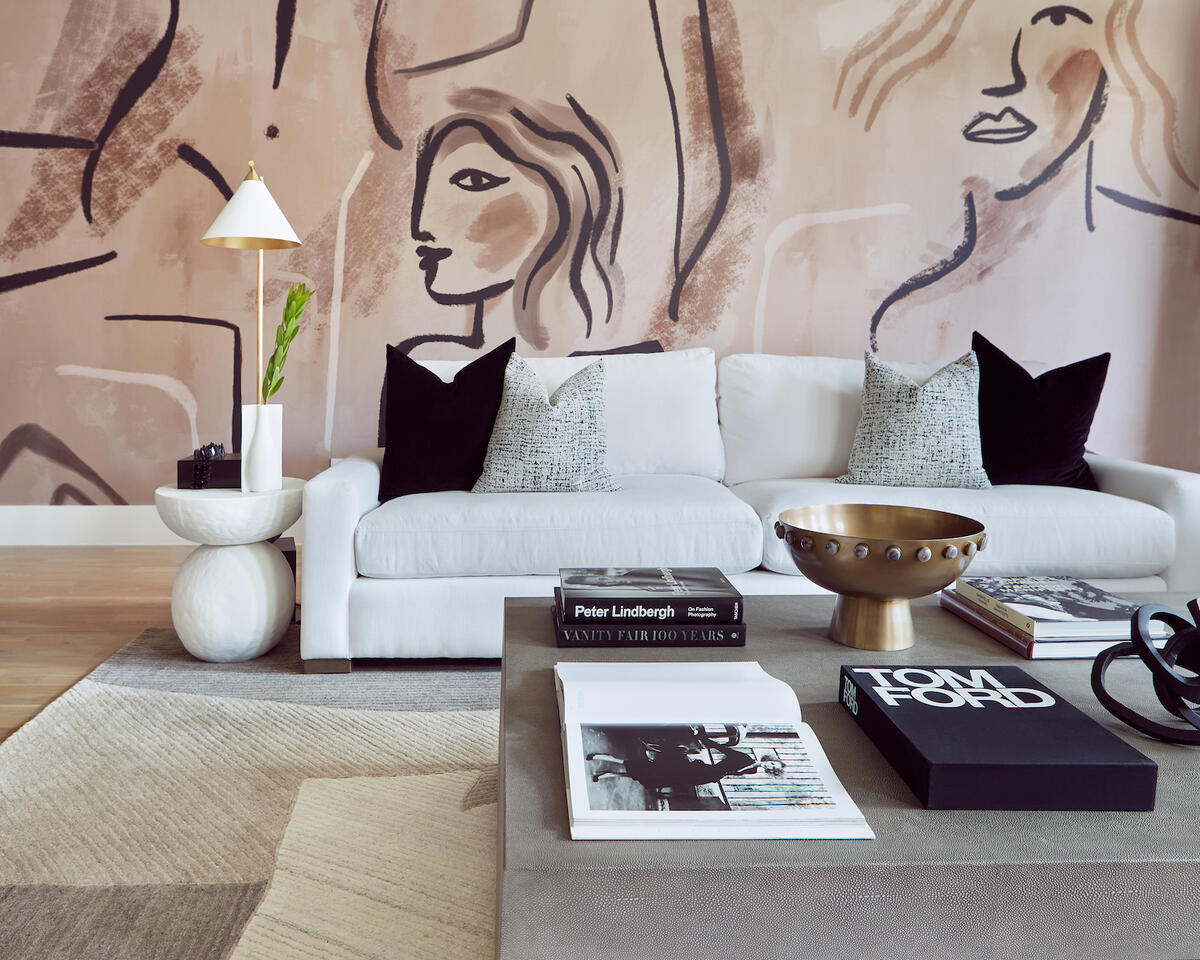
When you look ahead, where do you see the most opportunity to grow?
We’re moving into a new space where we will have a loading dock so that I can receive bigger things there. I do not want a store that anyone can walk into, but I do want more of a showroom for clients, and I want to have things on display so that if a client comes in for a meeting and they’re like, “Oh, my God, I want that pillow,” or “I want that vase,” I can be like, “Yeah, girl, take it.” But that’s also driven by what we need—we’re going to start buying more inventory that we can pull from for our installs, rather than going to every store in Little Rock and buying at the retail price. It’ll also be a space we can grow into. Eventually, I would love to have a bigger team and just keep growing.
What does success look like for you?
I mean, I don’t want to be cocky, but to me, this is it. When I was able to go to Architectural Digest, type in my name, and I found something—that was everything to me. Our local magazines support me a lot, but I would love to be published in bigger magazines, in print and not just online. But to me this is success: We’re paying our bills. We’re moving to a bigger space. Employees are happy. We still have clients.
When you look back, what is the biggest thing you know now that you wish you had known when you started your business?
Hold on, I’m gonna cry. I don’t think I ever expected it to be where it is—I mean, in the beginning, I worked in my house for $35 an hour with my kid sitting on my lap. I hoped, but I just never thought I could be as successful as I am. For so long, I just followed my husband around. It took me a long time to figure out how to focus on what I wanted to do, but I’m doing it now. I have dreams and goals, and I want to accomplish them. So maybe it’s that I wish I’d had confidence. I wish somebody would have been like, “Bitch, you can do this. You can really do this.” I just never in my life thought I could be where I am. Now, I want my daughter to know: You can do anything.
To learn more about Jill White, visit her website or find her on Instagram.
















